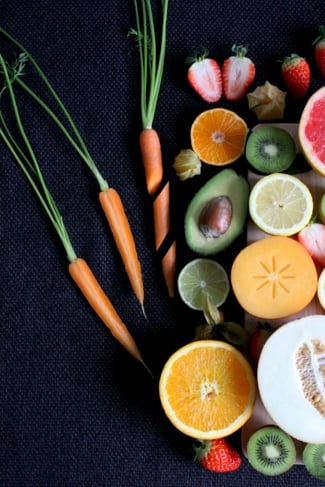
Type 2 diabetes was almost nonexistent among children three decades ago, affecting primarily adults 45 and older. Nowadays there is a worrying increase in cases among young people. What happened between then and now?
Understand the insulin connection
Every time we eat, our bodies get an influx of sugar which, with insulin produced by the pancreas, enters our cells as energy. This process keeps blood sugar levels balanced after meals or treats.
Sometimes cells stop responding to insulin, or the pancreas does not produce enough. That’s when a high carbohydrate intake can be problematic, says Rachel McBryan, registered dietitian on Vancouver Island, BC.
“Being overweight and eating lots of carbs can start a cascade of increased insulin production, but, eventually, the pancreas can’t keep up, which leads to insulin resistance,” says McBryan. This can affect the cardiovascular system and the kidneys, and it can also cause vision problems.
Know the risk factors
When it comes to chronic diseases such as type 2 diabetes, genetics plays a role. Other risk factors, however, have to do with lifestyle.
“Type 2 diabetes is linked to abdominal obesity (‘belly fat’), and the number of children with excess belly fat has increased in recent years,” says McBryan.
Teenagers have an added challenge. Due to a physiological boost in growth hormone, they can experience insulin resistance during their puberty years.
Also, many kids and teens are stuck behind screens for long stretches of time each day, which is another risk factor. “Physical activity improves the effectiveness of the insulin the body produces,” says McBryan.
Teach the F word (fibre, that is)
A recent study concluded that people who ate whole grains and whole grain foods (such as oatmeal, added bran, whole grain breakfast cereal, dark bread, and brown rice) had a significantly lower risk of type 2 diabetes.
If you guessed that fibre is behind the magic, you’d be right, but there are also phytochemicals, minerals, and vitamins. They help increase insulin sensitivity, decrease body mass, and reduce inflammation.
It’s never too early to start. “Parents are crucial in setting up healthy boundaries around food and eating, and they must model healthy eating behaviour,” says McBryan.
Setting healthy boundaries
McBryan’s recommendations for setting healthy boundaries include ensuring each meal contains plenty of fruit and vegetables, avoiding power struggles, and gradually reducing existing preferences for sweet foods, rather than replacing sugar with substitutes.
Make it a family affair
Explore healthy eating as a family. “With children, I recommend at each meal, having one food that you know they like and also offering a new food,” advises McBryan.
Here are some tips to transform your family’s health:
- Leave the peels on whenever possible, but wash or scrub before eating.
- Think in colours—the more on the plate, the more phytochemicals and fibre.
- Replace sugary morning cereal with a create-your-own array of fruit, nuts, and seeds over bowls of cooked oatmeal.
- Keep meat (especially fried) to a minimum. Plant-based diets contain antioxidants and fibre, which can lower the risk of type 2 diabetes by reducing inflammation.
Herbs and spices
Turmeric
When consumed regularly, turmeric can lower the risk of prediabetes, the condition that precedes type 2 diabetes. Add it to soups and stews or sprinkle on baked veggies.
Fenugreek
Expand your cooking to include fenugreek. This spice was shown to help reduce the effects of insulin resistance.
Cinnamon
Cinnamon has been used for blood glucose control, but its effect on insulin sensitivity is limited.
Garlic
Garlic has been shown to reduce cholesterol and triglyceride levels and reduce hyperinsulinemia. Add a bit of fresh garlic to healthy dips such as hummus, but if not well tolerated, you can opt for aged garlic extract, which was shown to be an effective antioxidant.
Note:Please consult your health care practitioner to choose the right supplements for your children.
Recent estimates show that one in three Canadians have diabetes or prediabetes, with type 2 diabetes accounting for up to 95 percent of diabetes cases. That includes children and teenagers, too. Almost half are of Indigenous heritage.
Tips for managing symptoms
- Exercise for a total of at least an hour daily (preferably outdoors).
- Cook together from scratch using whole foods.
- Choose home-cooked meals over takeout.
- Reduce portion sizes.
- Replace sugary drinks, including fruit juices, with water.
- Eat unprocessed snacks only (fruit or vegetables, nuts, homemade seed crackers).













